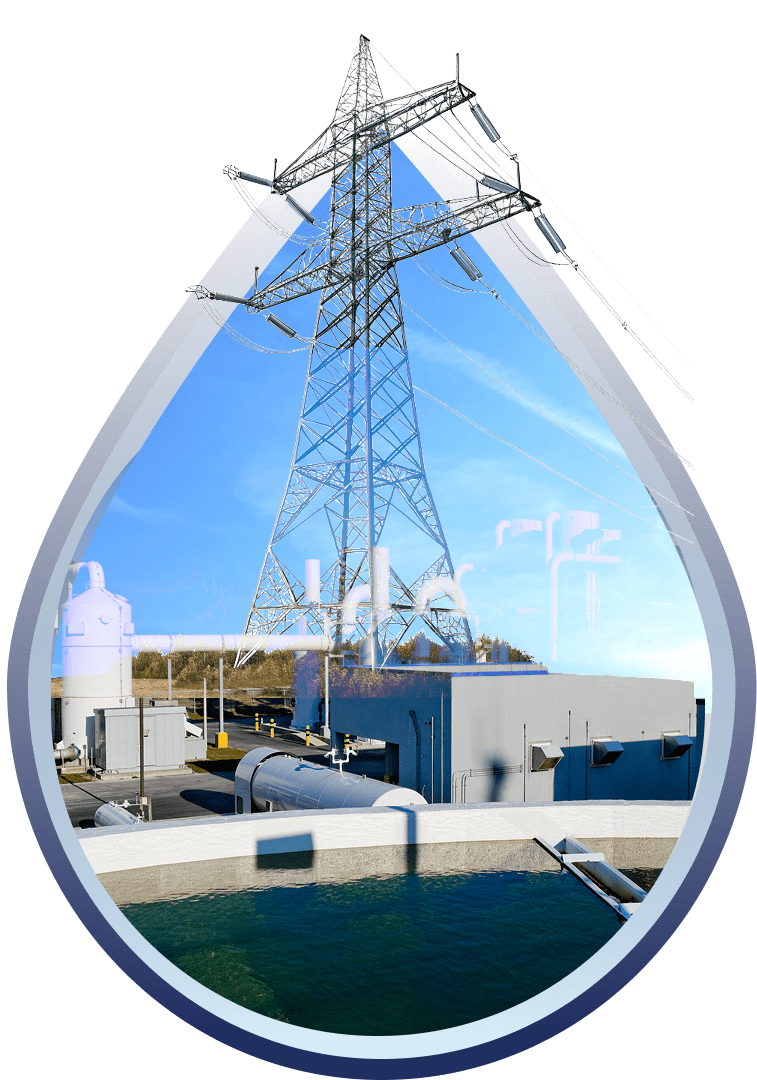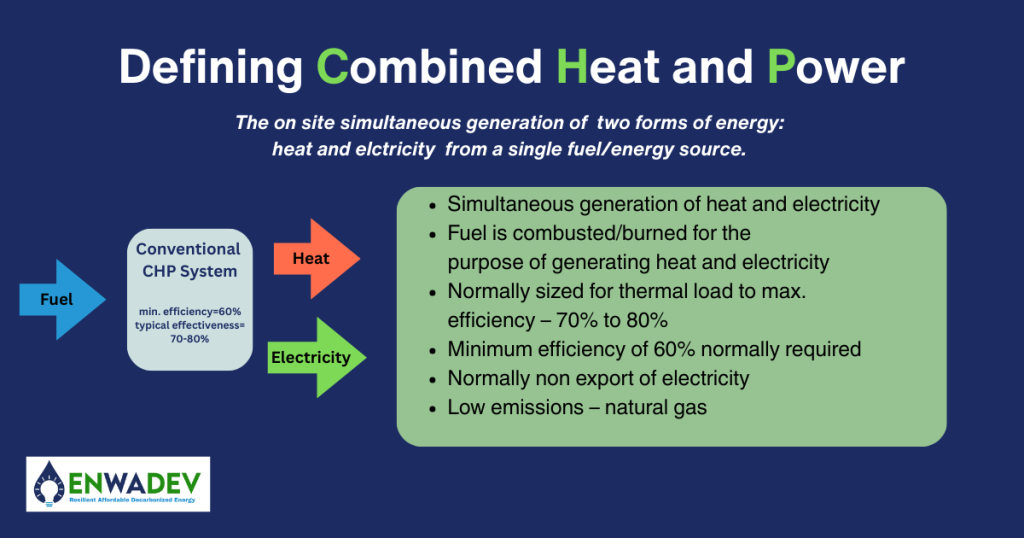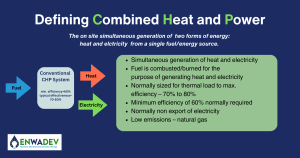Combined Heat and Power (CHP) systems—also known as cogeneration—are quietly revolutionizing the way buildings and campuses manage energy. By simultaneously generating electricity and useful thermal energy from a single fuel source, CHP systems can offer significant savings, reduce carbon emissions, and improve energy resilience.
But how do they actually work? And what does it take to engineer and build a CHP system from the ground up?
At Energy and Water Development (EnWaDev), we specialize in designing and constructing modern, modular CHP systems that deliver long-term performance and efficiency. Let’s break down how CHP works—and why engineers, contractors, and forward-thinking developers are turning to this technology to power the future.
What Is Combined Heat and Power (CHP)?
Most buildings today rely on the grid for electricity and burn separate fuel to generate heat. This traditional model loses a tremendous amount of energy in the form of waste heat during power generation.
CHP flips that script.
CHP systems capture the “waste” heat produced during electricity generation and repurpose it for heating water, indoor space, or even cooling (through absorption chillers). This dual use of energy from a single source can achieve total system efficiencies of 60–80%, compared to about 50% (or less) for traditional energy generation methods.
How CHP Systems Work: The Basics
At the heart of a CHP system is a prime mover—typically a gas turbine, steam turbine, or reciprocating engine—that drives an electric generator. As electricity is produced, heat is also generated as a byproduct. Rather than venting that heat, CHP systems use it to:
- Heat domestic hot water
- Provide space heating
- Support absorption cooling
- Serve industrial processes
This integrated approach reduces the need to purchase electricity from the grid and lowers reliance on separate heating systems—saving both energy and money.
Where CHP Delivers the Most Value
CHP is ideal for buildings or campuses with consistent thermal and electrical loads, such as:
- Hotels and resorts
- Hospitals
- Universities
- Industrial facilities
- Large multifamily buildings
- Government campuses
At EnWaDev, we’ve implemented CHP in urban hotels, technical universities, and cannabis cultivation facilities—each with unique energy profiles and goals. The common denominator: efficiency and reliability.

What Engineers and Contractors Do to Build a CHP System
Designing and delivering a CHP project is a multidisciplinary effort that requires tight coordination between engineers, contractors, and project stakeholders.
1. Feasibility & Energy Modeling
Our team begins with a detailed feasibility study, including:
- Load analysis (electric and thermal)
- Utility rates and tariffs
- Space constraints
- Payback calculations
- Environmental impact assessments
We build custom energy models to simulate CHP performance under real-world conditions and identify the optimal system size and configuration.
2. System Design
Once feasibility is confirmed, we move into engineering design, which includes:
- Equipment selection (engines, heat exchangers, controls)
- Thermal integration design (boilers, hot water loops, chilled water systems)
- Electrical design (tie-ins to the building or campus grid)
- Emission control and permitting considerations
EnWaDev is known for modular system designs that reduce installation time and offer flexibility for phased growth.
3. Construction & Commissioning
Our construction management team ensures:
- Site preparation and mechanical/electrical integration
- Equipment installation and alignment
- Piping, ventilation, and exhaust routing
- Coordination with utility interconnection
- Controls programming and testing
We provide oversight through every stage of construction and lead the system commissioning process to verify performance and safety.
Why CHP Is a Game-Changer for Energy Savings
CHP delivers more than just a lower utility bill. It can also:
- Reduce greenhouse gas emissions by utilizing fuel more efficiently
- Improve resiliency in the face of grid outages or instability
- Lower operational costs with predictable energy expenses
- Qualify for incentives in many regions through clean energy programs
And unlike many renewable energy systems that depend on sun or wind conditions, CHP delivers consistent, on-demand power and heat.
Ready to Explore CHP for Your Facility?
At Energy and Water Development, we’ve helped clients turn energy waste into value—while designing and building systems that integrate seamlessly into their operations.
If you’re considering Combined Heat and Power for your building or campus, contact us to schedule an initial consultation.




